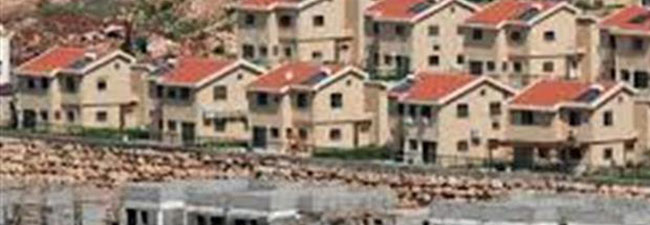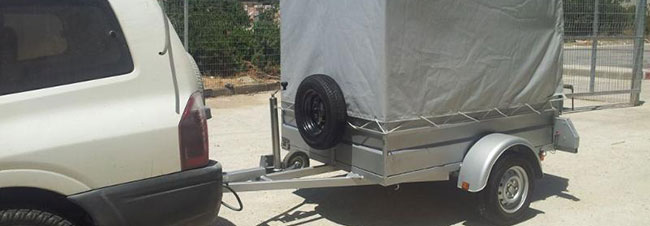Frederica Barlaz
Author: Staff
Frederica Barlaz’s report on her AFSI Chizuk trip this past May
Frederica Barlaz
The Israeli sector of my second AFSI (Americans for a Safe Israel) trip began on Yom HaZicharon (Day of Remembrance) which was a Monday.. Our first stop was in south Tel Aviv where we learned first-hand about the illegal immigrant problem there. Eritreans and Sudanese have been crossing over the Egyptian border to claim refugee status in Israel, and a number have been committing crimes. The local people including legal Filipino workers have been the unfortunate victims. From Tel Aviv we went to Sderot, a town that has suffered tens of thousands of missile attacks since the 2005 evacuation of Gush Katif. We met with the mayor and took a tour of the town. The playgrounds are equipped with colorful pipes that serve as shelters during the attacks from Gaza. There are shelters throughout the town; the residents have 15 seconds to get into a shelter after the alarm sound. Next we drove to Nitzan where we visited the new visitors’ center/museum to commemorate Gush Katif. The exhibits are very moving and we also met with Shifra Shomron, a former resident of the former Neve Dekalim in Gush Katif, who wrote Grains of Sand: The Fall of Neve Dekalim. I have read this beautifully written book and highly recommend it. Shifra vividly portrays the months, weeks, and days prior to the expulsion of the residents. On to Hebron for another briefing by David Wilder and a stop at the Cave of the Machpela where Avraham, Sarah, Isaac, Rebecca, Jacob, and Leah are buried. This burial site was purchased by Abraham–it’s in the Bible. We then drove to Jerusalem where we spent the night.
The following day was Yom Ha’atzmaut Some menbers of my group ascended to the Temple Mount. Some of us slept in! Mid-morning we went to visit Samuel’s tomb in the Givon Valley and then we proceeded to the site of King Hussein’s summer palace which was never completed due to the 1967 war. This is considered to be the most important archaeological site after the City of David in Jerusalem. Artifacts dating back to the Second Metal Period have been unearthed and it is believed to be the site of King Saul’s Palace. (Hussein built over it.) Our next stop was Ammunition Hill and its museum. Many Israeli families were visiting on this holiday and the atmosphere was very festive. Late afternoon we visited a new yeshiva outside the Flowers Gate to the Old City and also made visits within the present Arab Quarter.
On Wednesday we first visited Beit Orot Yeshiva(religious school) on Har Hatsofim(Mt. Scopus). Then northward to Ma’ale Adumim which was established in 1982 by Rabin as a city. He wanted to have a corridor to French Hill in Jerusalem. A beautiful, exceptionally clean city with a population of 40,000, it is the largest Jewish city in Yehuda and the Shomron (West Bank). Due to a building freeze for the past three years there isn’t enough housing for all those who would like to live in Ma’ale.Adumim. The environs of Jericho were next. Jericho marks the beginning of the Jewish people in the land of Israel. We stopped at a spot by the Jordan River where it is believed that the Jews crossed into the land at the end of the exodus from Egypt. Gilgal is the area where the first Passover was celebrated. A visit to Beit Hogla (the name hasn’t changed in 3,000 years) where a woman named Erna grows and sells olives and pomegranates. A follow-up stop in Brosh where Sraya Ofer had been murdered to visit with the seven young Israelis who hope to develop the compound into a tourist/guesthouse attraction. These men and women rotate guard duty every night. At last, we reached the Ruth Rimonim hotel in Tsfat where we spent four nights.
The Hesder Yeshiva in Kiryat Shemona which is very close to the Lebanese border was our morning stop on Thursday. (A hesder yeshiva is where religious boys learn before and after their military service.) Some of the boys spoke to us and it was clear that this particular yeshiva is thought of quite highly. out of 150-200 applicants taking the test about 50 are chosen. They start at age 18 and study Torah for 11 hours per day. There are 1 1/2 years of learning followed by 1 1/2 years of Army service followed by 3 more years of learning. There are over 60 such institutions in Israel. In addition to their studies the boys are actively involved in community service. In the afternoon we visited Kibbutz Misgav-Am which is right on the border and heard about the situation there; fortunately, it appears to be peaceful. Back to Tsfat for some art gallery hopping before they closed. After dinner we had a provocative presentation by Ken Abramowitz on the future of western civilization. (Incidentally, Ken is committed to giving 100 of these talks during this year at no charge. He will travel within the US at his own expense. He can be contacted at ksabramowitz@msn.com)
Friday’s program began with a drive to Kibbutz Merom Golan from where we took jeep rides to the Israeli-Syrian border. We saw and heard a great deal of bombing on the Syrian side. The kibbutz itself is very lush and flourishing. I recalled the name of this kibbutz from when I lived in Israel (1972-73)–there had been ads in the Jerusalem Post inviting people to join. I sort of wondered what path my life might have taken had I gone up to the Golan and become a kibbutznik! We then headed a bit south to visit Mechina Hespid, a yeshiva and technical college. This institution accepts students(many immigrants) whose prior school records were not sterling and gives them the opportunity to learn valuable skills prior to joining the military. This ensures them good military positions and future employment prospects. Some of the boys spoke with us and we were very impressed with the work this mechina is doing. We also made a stop at Um El Kantir, an archaeological site. It had been destroyed in 749 by an earthquake and was first excavated in 2003. We attended Sabbath services inTsfat and had a traditional meal at our hotel.
On the Sabbath we attended services at local synagogues and had lunch at our hotel. In the afternoon we had a talk by David Wilder who was spending the Sabbath with us.. He spoke in depth about living in Hebron. Later on we had a walking tour of Tsfat and went to ASCENT, a Chabad institution for learning, the third meal and havdalah, a service that marks the end of the Sabbath and the beginning of the regular week.
We headed west on Sunday morning to Kfar Vradim where we enjoyed a home visit with Aharon and Susie Pulver.( Aharon is the head of the Israel Independence Fund which is involved in helping fund various Jewish communities and programs.) The mayor of nearby Ma’alot spoke to us in the Pulvers’ garden about his city. Some of you may recall that in 1974 three terrorists from Lebanon murdered 27 students who were asleep in a Ma’alot school. Ma’alot was established in 1957 by immigrants from Tunisia and Morocco and today has a population of 25,000. There are about 50 factories that provide local employment. After his talk we visited the underground command center in Ma’alot and saw how it monitors the city. Impressive, but so sad that this is the reality. We also visited the Tefen Industrial Zone which provides a unique setting of sculpture gardens to increase worker productivity. We were told that not one Israeli company has gone bankrupt due to boycotts and divestment efforts.. The sheer beauty of the North is breathtaking and we were all marveling at the scenery. As we drove we saw multitudes of unoccupied new multi-story villas and apartment buildings in Arab villages for which building permits had not been obtained. This is an effort to claim sovereignty over the land. Next stop was Rambam Hospital in Haifa where we were treated to the amazing new underground emergency 2,000 bed hospital. During normal times it is a colorful parking lot; in wartime, it converts to a fully functional hospital within 72 hours. They still need more hospital beds so if you’d like to donate…If anyone’s interested in statistics, about 25% of the Rambam staff is Arab, 30% of the patients are Arab, and the head of Nephrology is a female Muslim. Dinner, a delightful dance performance , and overnight at our hotel in Ariel.
On Monday, our last day, on the way to Yitzhar we passed prosperous expansive Arab villages without fences. Yitzhar, in contrast, is fenced in, with an armed guard on duty, unpaved roads, small trailor homes. One of the residents has been placed under house arrest for the crime of warning a neighbor that the IDF was going to demolish his home. The home was demolished by tractors because of pressure from the Arabs and the US on the grounds that he didn’t have the proper permits. (Leftist Israeli groups stir up local Arabs against the yishuvim–Jewish communities in the West Bank.) Our next stop was the community of Chavat Gilad. Even though it was built on private land it is still subject to demolition. Water and electricity are not supplied by the government. The trailer homes are very simple. One member of our group had brought boxes of new clothing for the residents which were greatly appreciated. We then drove to Ma’ale Rehavam in Gush Etzion Municipality where demolition of homes had taken place and more was scheduled. Just one more example of a double standard for Arabs and Jews. Our final stop was in Netzer with the Women in Green, a group that has been trying to halt illegal Arab building on state land between Jewish and Arab villages. (Under Israeli law , after 7 years of squatting by Arabs on state land, it becomes Arab private land.) We planted saplings on state land. Then it was time for our farewell dinner near Efrat.
AFSI is a remarkable organization giving both moral and financial support to worthy communities and causes within Israel. I encourage you to join.
AFSI group visiting Israel – in Sderot, and with Ateret Cohanim
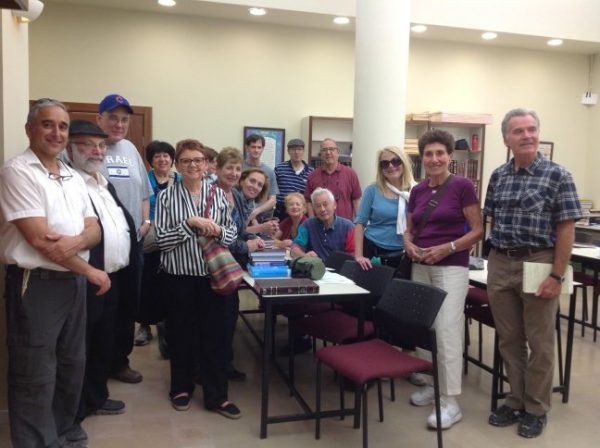
AFSI visited the new property that has been purchased by Ateret Cohanim which is an organization that is working to reclaim Jewish homes and other buildings in East Jerusalem. This building will house a mechina which is a school that students can attend for a year prior to entering the army. At the mechina they learn the more about the history and meaning of the land for which they will be fighting.

The AFSI group met with Benny Kashriel, mayor of Maaleh Adumim, on the outskirts of northern Jerusalem. The problems of the E1 corridor, connecting Jerusalem and the city, were discussed. U.S. surveillance of the area, and its intrusion into the decisions of the municipality, were revealed. We also spoke about the industrial zone which houses companies like Soda Stream, which are subjected to boycotts. The factories employ many Arab workers.
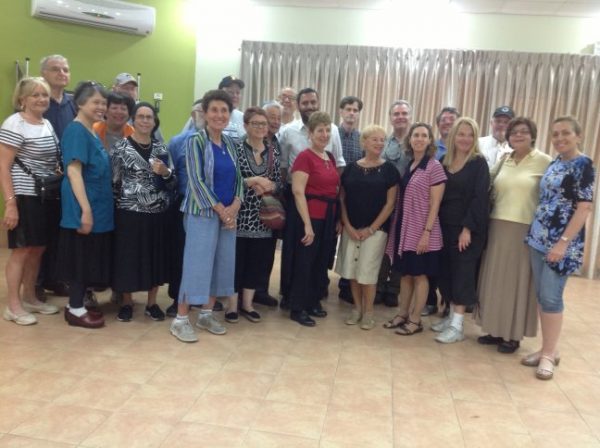
Mayor Alon Davidi, long-time friend of AFSI, greets the group on Yom HaZikaron in Sderot. He spoke to the group about the growth of the city, despite the ongoing shelling of Sderot by Hamas.
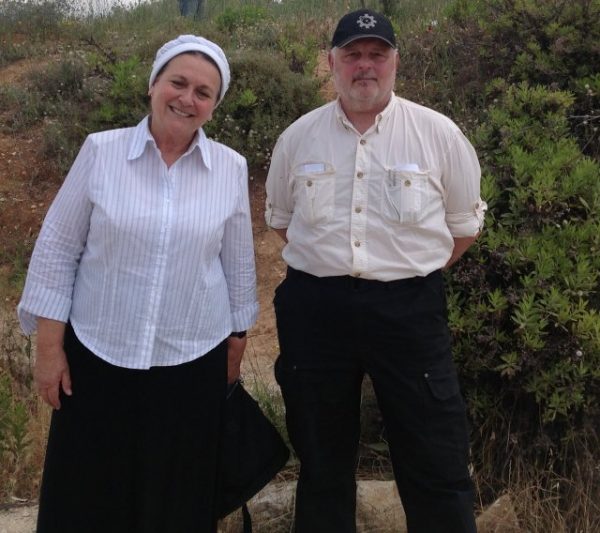
Daniella Weiss, former mayor of Kedumim and ongoing fighter for Israel has been one of the primary forces in the fight to keep the E1 corridor. Leon Szmedra, AFSI member and frequent mission participant has been doing all he can to help Daniella from his home in Rochester. AFSI is also a supporter of this vital cause.
The Titanic – a Metaphor for Israel today – AFSI Chizuk, Oct. 2013
Helen Freedman
In one portrayal of the Titanic, the mighty and majestic ship that hit an iceberg in the North Atlantic on April 14, 1912 and sank in a little over two hours, we see the captain, the owner, the senior officers, pushing the ship to speed through the waters so as to break all previous records. Since it was the ship’s maiden voyage, traveling from Southhampton, and then Queenstown, England, to New York, the crew of stokers, greasers, and firemen who worked in the engine room far below the luxury decks, understood that the ship should not exceed its abilities on its first time out. Their superiors had different ideas and went so far as to ignore all warnings of icebergs in the sea as they urged the ship on. The result was the loss of the ship, 1500 lives, many injured, and much suffering amongst the survivors. It is easy to see the comparison to Israel today.
As the AFSI Chizuk group traveled around Israel on this Oct. 20-28, 2013 mission, it was apparent that the “little guys” understood the need to hold onto the land, and to fight for a “whole Israel”, while the “captain” and his “officers” played horrific games with Israel’s safety. What we saw was Arab arrogance, audacity, and terror that was completely out of control, while Israel’s Jews were being discriminated against, imprisoned, and treated like second class citizens. The “captains” were busy releasing prisoners and talking “peace” and the “two-state solution” with the Arabs, while the “little guys” were putting the facts on the ground, regardless of the personal sacrifice required. Picture the Titanic crew in the belly of the ship working desperately to keep the ship moving, while the captain and his henchmen dined in the elegant dining rooms, ignoring warnings of disaster and pushing forward recklessly until the tragic collision with the iceberg that would sink the ship. That is the story of Israel today which we witnessed firsthand on our Chizuk mission.
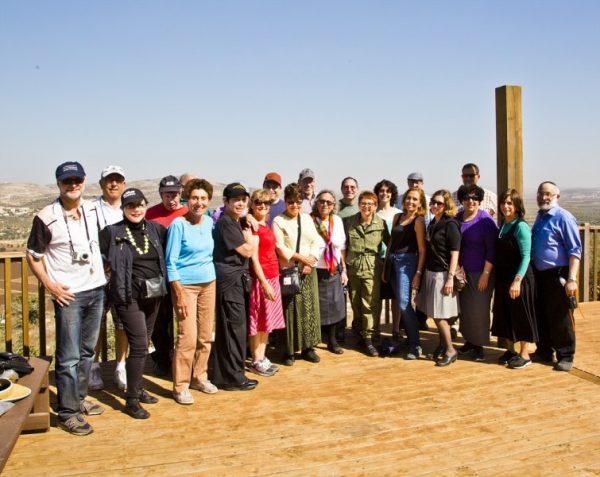
Once again the AFSI Chizuk group gathered at Ben Gurion airport – our 36th time, traveling to the disputed areas of Israel, to give encouragement and support – Chizuk!
Hasmonean, Modiin Illit, and Kiryat Sefer were our first stops, with David Jacobs acting as our host and guide. Israel Danziger of Mishmeret Yesha joined us. David pointed out that the population of these communities, 57,000, was the largest in Judea and Samaria. Being ‘over the green line’ they were ‘on the table’ in the ‘peace talk’ negotiations.
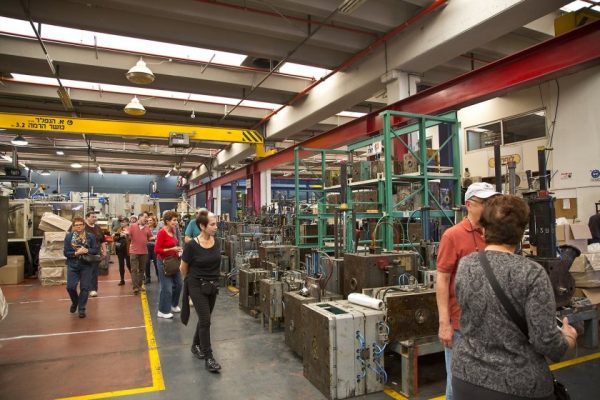
The Arab sprawl became apparent as Danziger led us to Charasha, a non-authorized community. Standing on Mt. Choresh, and looking out over the area, all we saw were Arab villages. As we drove through N’ariya we passed the Arab University of Bir Zeit on the outskirts of Ramalla, a breeding ground for terrorism. We realized we were driving on a road which was in Area C, but we were surrounded by A/Arab areas which are all self-governing.
The brand new PA city of Rawabi, for which Israel gave the land, now boasts a huge PA flag. Being close to Ramallah, this city becomes another encroachment on Jerusalem.
Along the road, Arab cars were parked everywhere, their owners busy picking olives. We passed near Migron, a community that we had visited many times while it was threatened with being destroyed and transplanted. The threats were realized. We drove past Kochav Ya/akov and Tel Tzion, constantly viewing the Arab villages, identified by their Minarets and lack of fences. Our destination was Psagot, a Jewish community of 200 families. When the settlers first arrived, Ramallah was far in the distance. Now there are new homes abutting the Psagot fence. The recent infiltration by Arabs who shot young Noam Glick at her home in Psagot is clarified when one sees how close the Arab homes are to the community.
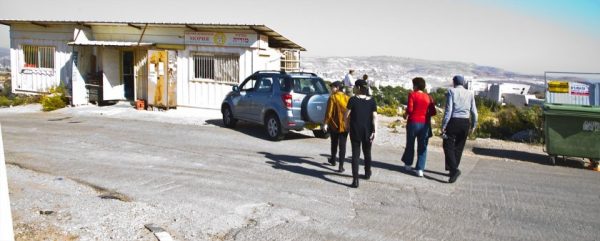
After lunching in Ofra, we tried to take the usual road to Amona. It had been destroyed by the Israelis. We were forced into a new, unpaved road, but thanks to our wonderful bus driver, Ami Dadon, we reached our destination. The sad sight of the caravans and the plots where destroyed homes once stood, underlined the absurdity of the Israeli government policy of destroying Jewish homes, but allowing illegal Arab buildings to flourish.
We completed the viewing of the Ramallah encroachment while visiting Bet-El. There, Baruch Gordon greeted us and explained the progression that took place with Arutz Sheva, now a very important internet news provider.
The Ashel HaShomron hotel in Ariel, where only AFSI Chizuk groups fear to tread, along with Christian Evangelicals, became our base for the first two nights. Lenny Goldberg, long-time resident of Tapuach and close friend to Binyamin & Talia Kahane, z”l, spoke to us about the many judicial issues in Israel, with the young people, especially, feeling the brunt of anti-Jewish discrimination.
Tuesday began with Avi Zimmerman of the Ariel Community guiding us to the Barkan Industrial Center where Jews and Arabs work side by side in 140 factories, earning the same salary and enjoying the same benefits as their Jewish co-workers. Still, the businesses endure PA and EU boycotting, even though the industrial center represents the best bridge to peace.
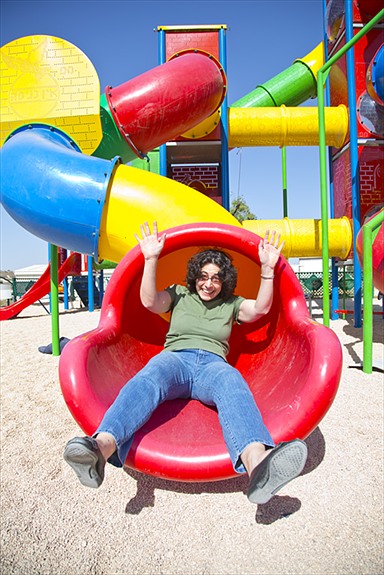
At Ariel University, home to 15,000 students, with approximately 500-700 Arabs and 500 Ethiopians, we met Prof. Alex Bligh of the Middle East Studies Department. He explained that the biggest problem was that Ariel U is under official boycott by all Israeli universities, except for Bar Ilan. The situation seems ludicrous. Israel boycotts its own people, professors, PHD candidates because the UN, U.S., and EU talk about a green line. This is shameful and self destructive. By doing so, they strengthen the Arab claim to the land and make cooperation between Ariel U. and U.S. universities much more difficult. In order to get academic recognition, they need an exchange of professors. We promised to do what we could to have this boycott ignored and encourage U.S. universities to partner with Ariel U. This is the path to peace, NOT the pretend promises of the PA.
Being in the Shomron, Samaria, we had to visit Chavat Gilad, home of forty families forgotten by the Israeli government, except to harass them. Our dear friend, Ileana Shimoni, greeted us, full of excitement over the new mikvah for women they had begun to build. Living without Israeli supplied water and fuel has placed a huge financial burden on the community. We always wonder why there would be a world-wide outcry over Arabs being deprived of these necessities by Israel, but Israel’s own citizens earn no consideration. The discrimination against Jews cries out for correction!
Yitzhar – the home of Ayelet and Akiva HaCohen and their many young children, is a favorite stop. AFSI has “adopted” the family, helping them when Akiva was placed under administrative detention and put in prison for absurd reasons .The community, home also to Boaz Albert, who was tasered by the Israeli police, now needs a synagogue. We promised to help raise funds for that project. Although Boaz was in prison, his family was still trying to run the winery. We bought some wine and enjoyed it thoroughly.
We ended the day with a night-time tour of the biblical garden at the Ashel HaShomron hotel. Tuvia was our guide – the night was beautiful – the camaraderie was warm and inclusive, and as we walked through our biblical history we were able to forget, briefly, the threat of the Arab encroachment and takeover of Israeli land.
Ari Briggs of Regavim joined us on Wednesday, Oct. 23 to drive north. He pointed out that we had to drive west before driving north because Israelis can’t drive through Arab villages, so the by-pass roads need new by-passes. We reached Mitzpe Ilan, the first yishuv in the northern Shomron, named after Israeli astronaut Ilan Ramon. We noted the many Bedouin encampments along the way. The community was surrounded by Arab villages. The forty families living there hope to increase to 100, but there is one serious problem, that of “environmental terrorism.” The Arabs burn charcoal and by 6 PM every day, the air is so thick, the residents must stay locked up in their homes. There have been many cases of asthma and a few cases of cancer in the community. The Arab communities of Hadera and Pardeis are affected also, but the Arabs don’t seem to care. Regavim has taken them to court and succeeded in getting the burnings moved to Areas A & B, but the wind brings the carcinogenics to Chavat Ilan and its surroundings. If the situation isn’t remedied, the Jews will move out, rather than expand. The Arabs will have won again, forcing another Jewish land retreat.
Nazareth Illit was our next stop where we met Aharon Pulver of the Israel Independence Fund, and his colleague Doug Altabef, an Israel Independence Fund Board Member, . The story repeats itself. Upper Nazareth is supposed to be Jewish as opposed to Muslim Nazareth; however it now has a majority of Arabs controlling the community as of the last elections. The wonderful Mayor, Shimon Gabso, was re-elected, but is under attack. If his enemies are successful, he might lose his position. It seems to be up to the Hesder Yeshivot to strengthen the city, and the one at Nazareth Illit is one that AFSI and the IIF support whole-heartedly. They are literally the “finger in the dike.” May they persevere.
Chavat Emek Dotan, the Dotan Valley Farm, was established twelve years ago to create a presence in the northern Shomron. David Bitzer gave us an extensive talk on the care the six families on the farm must give to their 600 sheep who graze on thousands of dunams of land, thereby preventing Arab takeover. As it is, Umal Farham is a huge Arab village with homes built to both sides of Road 65, controlling the area.
That night, at Kibbutz Lavi, where so much of the beautiful synagogue furniture is created, Mendy Neeman spoke to us on Israeli Advocacy. Using many Arab sources, he was giving us facts to counter the false Arab claims to land ownership. Unfortunately, people seem unwilling to be confused by the facts, but Mendy’s arguments are valid to those willing to listen.
Ari Briggs continued to guide us on Thursday, Oct. 24, as we began our descent in the Jordan Valley. B’rosh HaBiker, home to the recently murdered Sraya Ofer, was our first stop. Marc Prowisor of One Israel Fund, greeted us there and explained how efforts were in progress to increase security there against the non-stop incitement of hatred and killing in the Arab world. A Hesder Yeshiva group had already moved in to establish a presence in this remote, failed, Jewish community.
The importance of Jewish shepherding was reinforced again in our visit to Rotem. Shira Amussai once again captivated the group with her description of the origins of the community and her courageous one-woman effort to establish it. Shira and her husband now graze their sheep on 3000 dunams and are hoping to bring in 4 caravans to lure other couples to shepherding. After a wonderful lunch at Café Rotem, and some purchasing of fabulous herbal creams and oils, we drove on with Aharon Pulver and Doug Altabef to meet the Shomrim – guards – of Judea and Samaria in Yeshuv Adaat, near Shilo.
The Yishuv has 200 sheep on 8,000 dunam of land. Meir, the Director of the Shomrim of Judea and Samaria, explained that the Shomrim are prepared to guard the flocks from being stolen by Arabs. Theft is rampant and the Shomrim are necessary to enable the farmers to get some respite from their watch. The small community, led by Avichai and Eli Weiss, is planning for 150 homes. If they make it, it will help to prove the success story of shepherding.
It is always wonderful to return to Jerusalem, and that night, after checking into the King Solomon hotel, and enjoying a hearty dinner, many of the group went to Heichal David to participate in the Kahane Memorial Program. It was exciting to meet so many AFSI friends there, and to hear the crowd roar at the introduction of Arieh King, newly elected to the Jerusalem City Council. The elections had taken place Oct. 22, and we were thrilled that in addition to Arieh King winning his seat, our good friend, Alon Davidi, was elected Mayor of Sderot. We wish them every success.
Friday, Oct. 25, began with an exciting visit to Shdema where Nadia Matar of Women in Green was waiting for us with a huge welcome sign, and trees ready for planting. We then heard the remarkable Sarah Nachshon from Hebron tell her amazing stories about returning the Jewish community to Hebron. Her personal contribution is immeasurable. We then joined with WIG and the people of Tekoa in a demonstration against Arab terrorism on the roads, where residents were stoned and terrorized daily.
Racing along because it was Friday, and the day always becomes too short, we drove to Kever Rachel where Chaim Silberstein of Keep Jerusalem met us. The small roadside grave, which is now a fortress, is another Jewish holy site threatened by Arab takeover. The Arab presence in Bethlehem, once a Christian city, makes it Judenrein. However, study and celebration continues at the Kever. We were pleased to see the beautiful K ibbutz Lavi furniture in the building. It takes some of the sting from the pain of losing our freedom there.
Driving south to Hebron, we passed the entrance to Kiryat Arba and continued further south into the Hebron Hills to visit the outpost of Avigail, near Sussia, where the families of Avner Segal, Elisha Medan, and 30- other families have created an outpost. Their purpose is to create a presence that will break any Arab continuity of land in the area. We wished them great success and promised a more leisurely return visit.
Then it was back to Kiryat Arba to get our room assignments in Yeshivat Nir and prepare for Shabbat Chaye Sarah. The group walked down to the Maarat HaMachpelah, joining the throngs of white-shirted men and festively dressed women. We wished “Shabbat Shalom” to the many soldiers gurarding the route down to Hebron, and enjoyed a beautiful and soulful Kabbalat Shabbat in the Isaac Hall, open to Jews only on rare occasions.
A joyful dinner took place back at the Yeshiva with Rav Waldman greeting us graciously, as he always does. After dinner we walked the short distance to the home of Yehudit Katzover, another Hebron heroine, who now chairs WIG with Nadia Matar. Yehudit always hosts MK’s and VIP’s at her home. She always graciously invites us to join them for dessert – and we always accept and enjoy a special experience.
Shabbat morning was filled with prayers at the Ma’arat HaMachpela. We were thrilled to see the hundreds of tents and lean-to’s set up by the thousands of visitors to Hebron that Shabbat. Fortunately, the weather was perfect and the crowds seemed to be totally immersed in the joy of the Shabbat. Minyanim sprung up everywhere. Carlebach melodies could be heard filling the air, and groups of men danced joyously while reciting the prayers.
We joined the Hebron Fund at the Gutnick Center for Kiddush, and then AFSI Board Member Ken Abramowitz gave a compelling and erudite talk on the threat to western civilization posed by the Arabs. Ken is also President of the American Friends of Likud and on the Board of the Israel Independence Fund. His talk raised many issues and questions which kept the conversation going throughout the lovely lunch which followed.
People then divided into groups for the three tours arranged by the Hebron Fund. Rav Simcha Hochbacum, Noam Arnon, and David Wilder were the leaders, guiding people throughout the day, until it was time for shalosh seudot and havdalah.
Then there was the mad dash to pack up, get to the waiting cars and buses, to return home. Ami, our trusted driver, was there for us and soon we were back at the King Solomon in Jerusalem. Jeff Daube, ZOA representative in Jerusalem, was waiting for us and gave us an excellent talk on so many critical issues in Jerusalem and throughout Israel. We marvel at his ability to keep all the balls in the air and wish him continued success.
Sunday, Oct. 27, The Temple Mount group arose early to meet Rabbi Chaim Richman at the entrance to Har Habayit before 7:30 AM. The usual humiliating and discriminatory practices against Jews were in effect, but even more so. This time, after waiting two hours in the hot morning sun, while hordes of Christians streamed past us, only ten in our group were allowed onto the Mount. The new rule that only ten Jews at a time may be on the Mount, while hundreds of Christians, and untold numbers of Arabs are there, is so disgraceful as to be the height of anti-Semitism. This experience encapsulates the present state of affairs between Arabs and Jews in Israel today. The government doesn’t have the ability or the will to proclaim Jewish sovereignty in the Jewish state. Until this situation is remedied, the situation will only continue to deteriorate. How low can Israel go?
Eight of us who were unable to ascend the Mount turned away and returned to the King Solomon. Two who stayed were able to finally join another group for ten minutes before the Mount was closed to Jews at 10 AM. They told of having been harassed by Arabs the entire time they were there. The shame and humiliation is compounded because all this is happening under Jewish control in the Jewish state. How can it be?
The group re-united after this morning experience, and with Arieh King as our guide, we began touring the disputed areas of Jerusalem. Arieh, whose recent election to the Jerusalem City Council on the slate of the United Jerusalem Party, has been guiding AFSI groups for many years, and his new position did not keep him from guiding us again. He explained that the laws are enforced ONLY against Jews, NOT Arabs. Only Jews need security guards. Building in Jerusalem for Jews is frozen. National park plans for the city have just been frozen. Arieh is hoping that Naftali Bennett, Minister of Jerusalem Affairs, will be helpful in righting the many discriminatory policies against Jews in the holy city, capital of the Jewish state, Jerusalem.
We drove to N. Jerusalem, to Atarot – an area that had once been an international airport. It is now closed. Arab squatters have taken over 2000 plots. Arieh and his colleagues have hopes to build a hotel and Jewish residential community on Jewish owned land in the area.
We learned that past PM Levi Eshkol was one of the first pioneers in Atarot. The land was bought by the JNF and it was a thriving area until 1948 when Arabs conquered the village and Jews were evacuated. In 1967 the Jews regained the airport, expanded it, and built an industrial area. The Jewish residents did not return, but were re-settled near Petach Tikva in B’nei Atarot.
Today, Arab building goes on unchecked. The JNF does not want to interfere. They claim it is a political issue, even though the building is on proven Israeli owned land.
We looked out at the ugly security fence. Arieh explained that the area behind the wall, although fully Arab, is still in Jerusalem. The red signs warning Jews to stay out are put in place by the Israeli government. They are illegal. Jerusalem is the Jewish capital. Jews cannot be banned from it. We dared to drive our bus past the forbidding signs and through the Calandia checkpoint into the Arab section. We saw huge illegal billboards, owned by the sons of Mahmoud Abbas, carrying messages entirely in Arabic. We found ourselves on the Calandia-Jaba Road, built illegally, without Israel’s permission, by U.S. Aid. Taking this shortcut through the Arab areas, we were able to swing back past Pisgat Ze’ev and N’vei Yaakov, home to 70,000 Jews, in no time at all.
Arieh then took us to Beit Hanina, an Arab city in Jerusalem with one Jewish apartment complex. Chana Yichi greeted us at Beit HaSheva where she occupies one of seven apartments. Unfortunately, even in this one Jewish enclave, an Arab family has been allowed to move in. This will probably eventually bring in more Arabs, forcing the Jews to leave. We are still talking about Jerusalem: “If I forget thee, O Jerusalem, may my right hand forget its cunning.”
Dan Luria of Ateret Cohanim met us after Arieh’s time with us ended. He arrived on the bus loaded down with our picnic lunch fixings. As we drove to Kidmat Zion in eastern Jerusalem, Dan reminded us that 215,000 Jews live in eastern Jerusalem. Any plans to divide Jerusalem between east and west cannot succeed. There are plans for 300 families to be living in Kidmat Zion, and there are already 110 families living in Ma’aleh HaZaytim. Passing some of the nine gates of the Old City, we saw the Arab cemetery built outside Shaar HaRachamim. Since the Moshiach is supposed to arrive through this gate, the Arabs have deliberately built the cemetery there to prevent his arrival.
After our delightful picnic lunch, overlooking so much of Jerusalem, a great part of it Arab, we drove down to enter the Old City through the Flowers Gate, into the Muslim Quarter. Arabs were everywhere. Dan took us to the few Jewish homes and the Ateret Cohanim Yeshiva, which struggle to keep a foothold in the Old City. Children are escorted to and from school by security guards. Playgrounds are on roof-tops, NOT on the ground. The effort to gain more Jewish areas is ongoing and overwhelming. Without the cooperation of the Mayor and Municipal leadership, the struggle becomes too difficult.
Back at the hotel that evening, Martin Sherman of the Israel Institute for Strategic Studies, addressed the group. Martin is a brilliant writer and speaker and it would be too difficult to summarize his message here. He left us with the thought that we must eliminate the impossible – which is the two state solution – and we are then left with the improbable, the willing transfer of the Arab population. Needless to say, the conversation was brisk.
Monday, Oct. 28, was our last day of the Chizuk mission. The trip, which seemed to have just begun, was now ending. AFSI Chizuk trips would be incomplete without visits to our Gush Katif refugee friends. Dror Vanunu, our long-time guide, friend, and former head of the Gush Katif Committee, met us in Amatzia with his new assistant, Shifra Shomron. They introduced us to Na’ama, formerly from Katif, who now lives in Amatzia. She pointed out the small building at the entrance to the community, built in memory the of Hatuel family members murdered by terrorists during the years of the protests against the expulsion. Sixty-seven families now live there, but they are hoping to grow with the influx of families from many of the destroyed GK communities. Sadly, 8-1/2 years after the expulsion, there are still NO buildings, only lots.

In B’nei Dekalim, the new community in Lachish which is scheduled to house 500 families, Eliezer Ohrbach explained that only 15 families are presently there. The plans are ambitious; however, our dear friend Moshe Saperstein, who is finally seeing some progress on his home, greeted us with the chilling words that “everything is worse than imagined” and “everything is a lie.”
The crime of the destruction of Gush Katif and the displacement of 10,000 people by order of the Sharon government in 2005, is one that can’t be forgiven or forgotten. Eight and one-half years later, we still see the suffering of the people. One can understand Moshe’s cynicism.
And even here, in what is supposed to be uncontested Israel, we see the Arab town surrounding the area overlooking the southern Hebron hills. There is no escape.
We then went on to visit Shommeriya in the eastern Negev, formerly Atzmona, where Dudi Reich spoke to us. His story of displacement from Yamit in 1982, his move into Gush Katif in 1987, and then the 2005 deportation, followed by 200 days in the Emunah Industrial Park, is a heart-breaker. Dudi tells us that although Shommeriya is located in the middle of Israel proper, there are 100,000 Bedouins living near them between Kiryat Gat and Be’er Sheva. Israel seems to have given up on the Negev, ready to hand it over to the Arabs. We have reported previously about the Bedouin triangle of Arad, Dimona and Beersheva. Apparently the triangle also becomes a square and a rectangle.
We stopped to enjoy our gala farewell meal – this time lunch, NOT dinner, in Ashkelon. The reason for changing our schedule was our need to participate that evening in a huge demonstration at Ofer prison, outside Jerusalem, protesting the release of the second group of 26 terrorist prisoners. Before lunch, members of the group bought oak tag, markers, and paint to make signs for the demonstration. The message was that freeing terrorists invited more terror – not only in Israel but worldwide. When there are no consequences for criminal activity, there are no restraints. PM Netanyahu knows this. He has used these words himself. Nevertheless the terrorists were freed.
We still had some must visits to make so we headed for Bayer Ganim and the home of our dear friend, Laurence Beziz. The community is made up of expellees from seven different Gush Katif communities. Although this was the place promised to be built quickly by the government, Laurence and her family have just moved in and much of the area is a construction zone. There are only a few homes that have been built and there are NO community buildings like a synagogue or school or social hall. The residents who could afford to build homes are trying to help those whose compensation money has run out. The burdens are very heavy.
The hour was growing late and we still had to visit the Gush Katif heroine, Anita Tucker at the new Netzer Hazani in Yesodot. What a joy it was to see the beautiful synagogue, so artistically designed with the furniture again from Kibbutz Lavi. Anita proudly showed us the social hall and then the recreation hall built in memory of Yochanon Hilberg who was killed in Lebanon with eleven others. We drove away from Anita reluctantly, aware of the great miracles she and her colleagues had made happen in building their new community. As Anita stood in the doorway of the beautiful synagogue, she told us this was only temporary until they could return to Gush Katif. A people that still cries on Tisha B’Av about the destruction of two ancient temples can certainly continue to cry over the wanton and purposeless destruction by the Israeli government of the 21 thriving, beautiful Gush Katif communities. We have to tear our garments in mourning. No wonder our enemies rejoice at their victories. They are winning on so many fronts.
And then we drove to Ofer prison. We arrived there in the dark to see huge lights illuminating the grounds. We carried our signs, our AFSI banner, and our Israeli flags, and joined the thousands with their signs and banners – all deploring the release of the PA terrorists. Family members of victims of the terrorists being released cried out for justice. Every speaker denounced the release. Photographers and media were everywhere and many in our group were interviewed. Despite the crowd, the speeches, the signs, and all the effort, it seemed everyone knew that the protest would not avert the severe decree.
All these signs of Israel’s impotence lead to somber conclusions. The Arabs are winning the internal battle. Israel can successfully bomb weapons depots in Syria, but it appears unable to resolve the Arab take-over of the country. Is this willful neglect or inability to deal with the issues? Neither situation is acceptable.
The AFSI Chizuk group returned to the U.S. determined to spread this message to anyone willing to listen. Attention must be paid.
We will continue to visit these holy places on our next AFSI Chizuk mission scheduled for May 4-13, 2014. Call the AFSI office, 212-828-2424, or write: afsi@rcn.com, for further information and to make your reservations.
Thanks for the photos to professional photographer Frank Ritter who accompanied us on the Chizuk mission.
Why Won’t the Media Cover Huma Abedin’s Ties to Global Jihad Movement?
Diana West
Continue reading “Why Won’t the Media Cover Huma Abedin’s Ties to Global Jihad Movement?”
Mark and William Langfan at AFSI Rooftop Meeting
Helen Freedman
“Israel is vital to the interests of America and western civilization,” was the message delivered by AFSI’s Chairman, Mark Langfan, at the July 24 evening rooftop meeting of Americans for a Safe Israel. With forty activist members of AFSI in attendance, both Mark Langfan, and his father, William Langfan, gave stirring talks on subjects they have studied in depth. Continue reading “Mark and William Langfan at AFSI Rooftop Meeting”
The ‘Sex Jihad’
How tragic it is that for some people, especially those in leadership roles, it is so difficult for them to see, hear, and understand truths that are so obvious. While talk of communicating, appeasing, and negotiating with Jihadists seems a possibility to some, others understand the realities all too well. This latest article was sent by Steve Emerson of the Investigative Project. See below: Continue reading “The ‘Sex Jihad’”
Report: Netanyahu Ready to Give Up 90% of Judea and Samaria
We at AFSI are so distressed about the talk of giving up 90% of Judea and Samaria to the Arab terrorists, leaving 10% in Israeli hands. We know this would mean that the Arabs would be poised to destroy Israel, as they have always threatened to do. Their charters never acknowledged Israel’s right to exist, and the Israeli government’s appeasement and conciliation have made the goal of the PA and Hamas and Hezbollah and all the terrorist organizations, just that much easier to accomplish. After reading David Lev’s article, please see Mark Langfan’s map just below it. Continue reading “Report: Netanyahu Ready to Give Up 90% of Judea and Samaria”
Instilling Order in the Wild Negev
unknown author
While our dear friends, Nadia Matar and Yehudit Katzover, and their team of workers at Women In Green (WIG), struggle to hold onto Jewish land, and we at AFSI try to help a little bit, the government of Israel is giving away this precious land to our enemies. Continue reading “Instilling Order in the Wild Negev”


